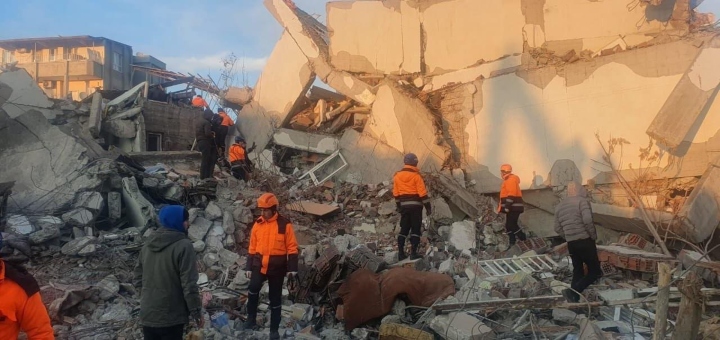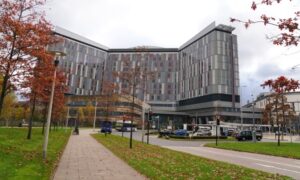Thousands of people are reportedly still trapped in the rubble of collapsed buildings around southeast Turkey following severe earthquakes on Monday, February 6.
As of Friday, February 10 afternoon, the government estimated that the two significant earthquakes and hundreds of aftershocks destroyed at least 6,444 buildings in 10 provinces, killing more than 18,000 people.
Terrible combination
Some of the most frequently asked questions on the internet concern why the deadly natural earthquakes destroyed so many structures and killed so many people.
Many have questioned how the infrastructure of the nation was so severely damaged by this natural calamity, for which Turkey had allegedly been prepared for over 20 years.
Many people have also questioned whether the two earthquakes’ magnitudes—7.8 and 7.6—were simply too powerful for most buildings to endure. Or perhaps the structures didn’t adhere to current building codes.
As expected, construction industry professionals have weighed in on the situation and appear to concur that a sad confluence of all of the aforementioned contributed to Monday’s disastrous outcome.
“These earthquakes are really rather large. The first one released nearly the same amount of energy as a 5 million tonnes TNT explosion. The second was 3.5 million tonnes in weight. Most structures wouldn’t be able to sustain such a force,” according to Professor Okan Tuysuz of Istanbul Technical University’s geological engineering department.
The two earthquakes struck quickly after one another, but Sinan Turkkan, a civil engineer and the president of Turkey’s Earthquake Retrofit Association, claimed they were very powerful.
He asserts, however, that had every building been up to standard, the total number of collapsed structures might have been lower.
The majority of the structures that collapsed on Monday were built before 1999, when the Western Marmara region was devastated by an earthquake with a magnitude of 7.6 that killed 17,500 people.
In order to get Turkey ready for the next major earthquake, the government considerably updated the country’s seismic design code after that and started an expansive urban transformation project in 2008.

Poor enforcement
After a magnitude 6 earthquake in Duzce, in northern Turkey, in November 2022 damaged more than 2,000 buildings, environment and urbanization minister Murat Kurum emphasized that the government was aiming to have every building in the nation “seismic safe” by 2035.
Karum added that 3.2 million homes had been rebuilt by the government.
“To comply with current rules, 250,000 homes are now being renovated across 81 provinces and 992 districts. Audits have been conducted on 6.6 million homes and businesses.”
“Currently, 24 million of our inhabitants reside in homes that are quake-safe,” he said in 2022.
However, these efforts were unable to stop the catastrophe, as the project’s implementation was subpar from the start.
Although it provided financial incentives, the government did not make taking part in its programme for urban transformation mandatory. This practically meant that only those who could profit from rebuilding—those who owned valuable plots appropriate for further development—agreed to tear down their old homes and build new ones in accordance with the most recent code. On the other hand, many people were unwilling to spend money on reinforcing or rebuilding projects that did not seem urgent.
This is the reason, according to experts, that more than 20 years after the Marmara earthquake, Turkey is full of structures built with subpar materials and decades-old construction methods that instantly collapse under a significant tremor.
What’s more, experts had also advised the government to prohibit all construction along the fault line in order to avoid future disasters.
According to Tuysuz, he was a member of the expert group that recommended drawing precise maps of the nation’s fault lines and designating regions directly adjacent to active fault lines as “green zones” that are prohibited from being inhabited.
However, “nobody listened,” he claims.
IDF soldiers in Turkey rescued a 7-year-old girl from the ruins of a building. As a token of appreciation, the girl’s uncle gave them sentimental coins that were passed down through generations in their family.https://t.co/82dxW6G65R pic.twitter.com/rLNZENH7wr
— Documenting Israel (@israelmuse) February 9, 2023
What causes an earthquake?
Simply put, an earthquake is when the earth shakes.
Hundreds of earthquakes occur every day; however, they aren’t usually strong enough for humans to feel them.
Then there are those enormous ones that result in significant damage and fatalities.
Where do earthquakes typically happen?
The Pacific Ocean’s rim, sometimes known as the “ring of fire” because of its abundance of volcanic activity, is where 80% of all earthquakes on Earth occur.
The majority of earthquakes happen in fault zones, which are places where massive rock slabs called tectonic plates meet or move in opposition to one another.
On the surface, these collisions are typically gradual and undetectable, but between the plates, tremendous tension can develop. Rapid release of this stress causes seismic waves, which are extremely powerful vibrations, to travel hundreds of miles through the rock and rise to the surface.
READ ALSO: What to Do In Case Of a Nuclear Attack
When plates are stretched or compressed, more earthquakes might happen outside of fault zones.
Do you have a story you would like us to publish? Please reach us through info@gotta.news
























